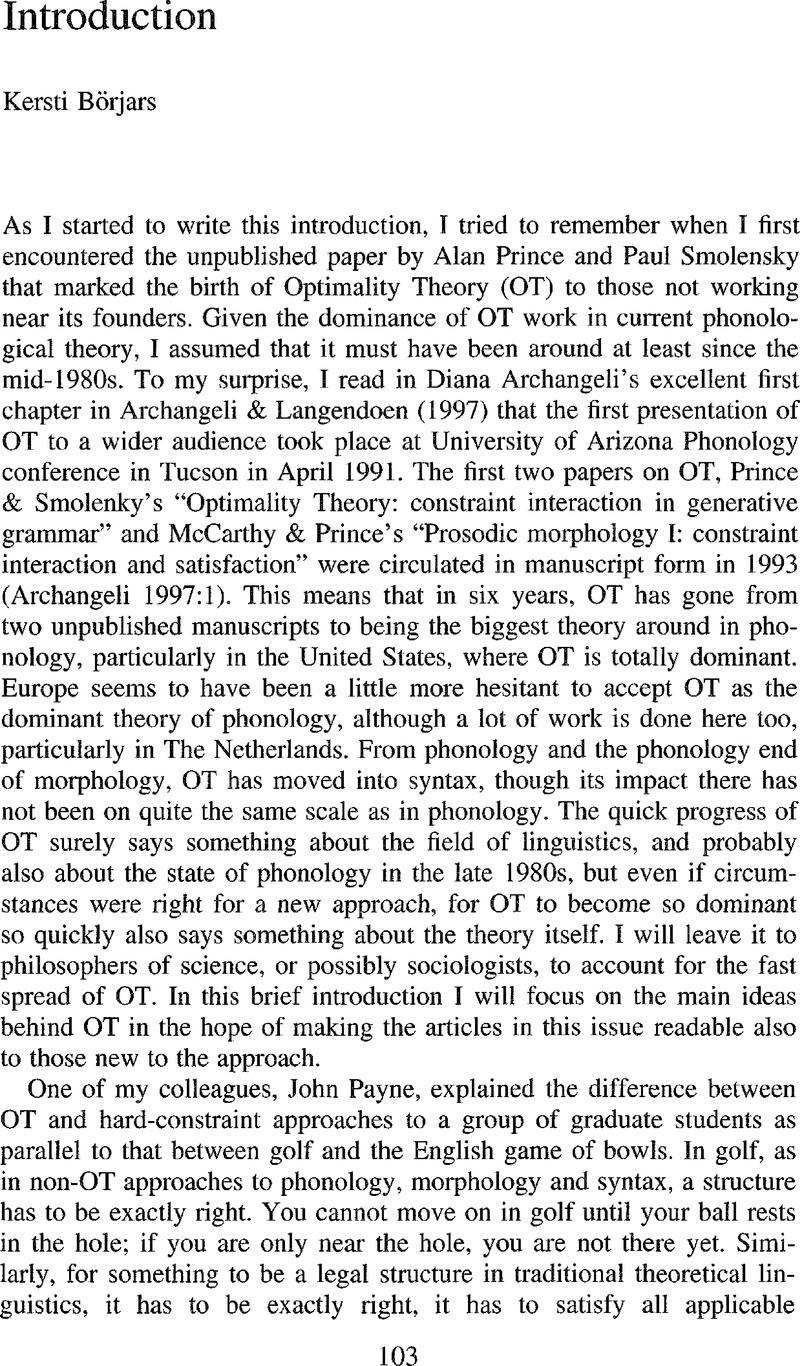No CrossRef data available.
Article contents
Abstract
An abstract is not available for this content so a preview has been provided. Please use the Get access link above for information on how to access this content.

- Type
- Introduction
- Information
- Copyright
- Copyright © Cambridge University Press 1999
References
Aissen, J. (forthcoming). Markedness and Subject Choice in Optimality Theory. Natural Language and Linguistic Theory. Draft version available at http://ling.ucsc.edu/~aissen/Google Scholar
Archangeli, D. 1997. Optimality Theory: An Introduction to Linguistics in the 1990s. InGoogle Scholar
Archangeli, D. & Langendoen, D. T. (eds), Optimality Theory: An Overview. Oxford: Blackwell, 1–32.Google Scholar
Archangeli, D., Langendoen, D. T. (eds) 1997. Optimality Theory: An Overview. Oxford: Blackwell.Google Scholar
Barbosa, P., Fox, D., Hagstrom, P., McGinnis, M., Pesetsky, D. (eds) 1997. Is the Best Good Enough? Optimality and Competition in Syntax. Cambridge, Mass.: MIT Press.Google Scholar
Beckman, J. N., Walsh Dickey, L., Urbanzyk, S. (eds) 1995. Papers in Optimality Theory. Amherst, Mass.: GLSA UMass.Google Scholar
Bresnan, J. (forthcoming). Optimal Syntax. In Dekkers, J., van der Leeuw, F. & van de Weijer, J. (eds), Optimality Theory: Phonology, Syntax and Acquisition. Oxford: OUP.Google Scholar
Dekkers, J., van der Leeuw, F., van de Weijer, J. (eds) (forthcoming). Optimality Theory: Phonology, Syntax and Acquisition. Oxford: OUP.CrossRefGoogle Scholar
McCarthy, J. J., Prince, A. S. 1993. Generalized Agreement. In Booij, G. & van Marie, J. (eds), Yearbook of Morphology 1993. Boston: Kluwer, 79–153.Google Scholar
McCarthy, J. J., Prince, A. S. 1995. Faithfulness and Reduplicative Identity. In Beckman, J. N., Walsh Dickey, L. & Urbanzyk, S. (eds), Papers in Optimality Theory. Amherst, Mass.: GLSA Umass, 249–384.Google Scholar
Russell, K. 1997. Optimality Theory and Morphology. In Archangeli, D. & Langendoen, D. T. (eds), Optimality Theory: An Overview. Oxford: Blackwell, 102–133.Google Scholar
Sells, P. 1998. Scandinavian Clause Structure and Object. In Butt, M. & King, T. H. (eds), Proceedings of LFG-98. Stanford: CSLI Publications, Speas, M. 1997. Optimality Theory and Syntax: Null Pronouns and Control. In Archangeli, D. & Langendoen, D. T. (eds), Optimality Theory: An Overview. Oxford: Blackwell, 171–199.Google Scholar


